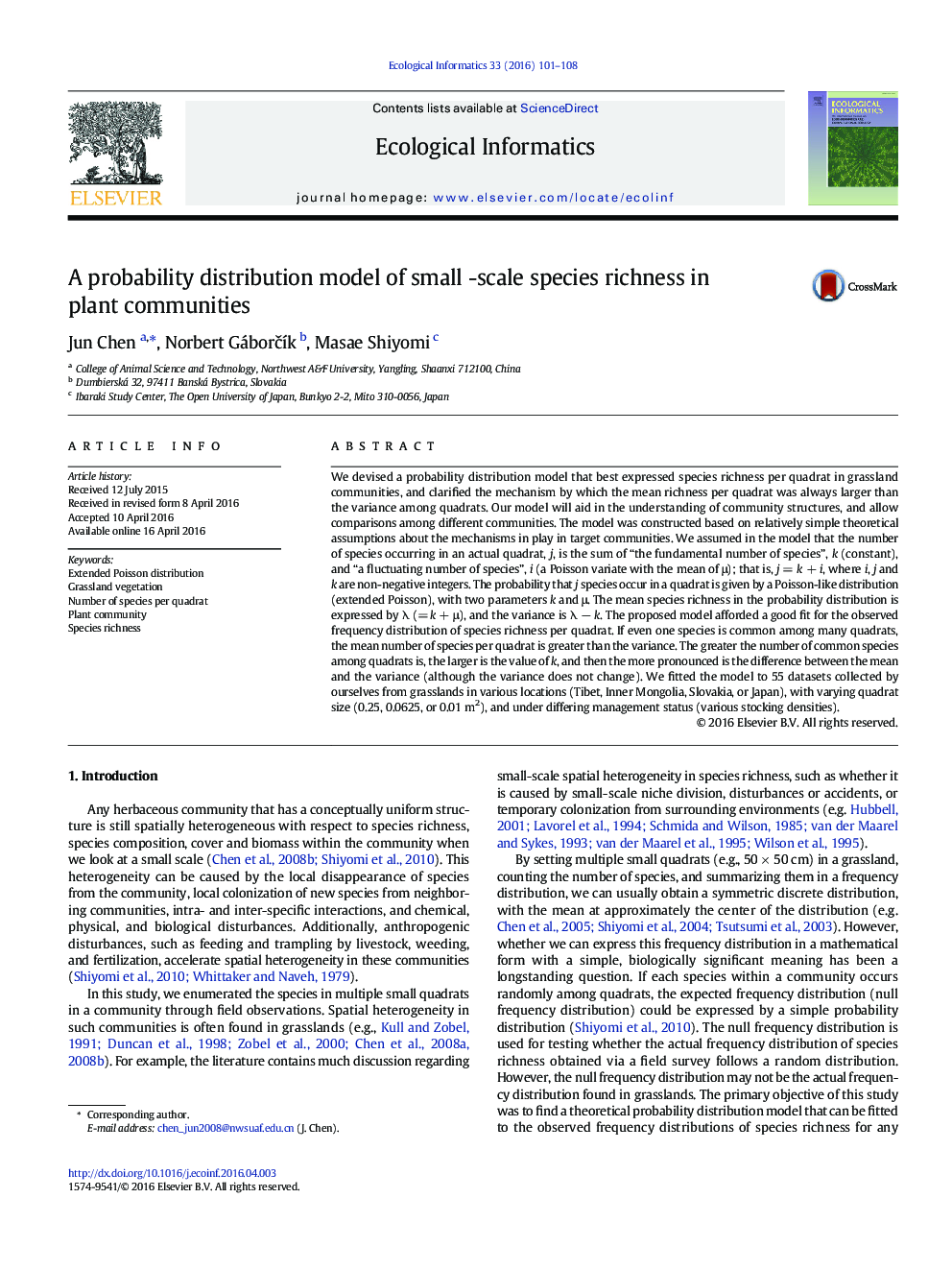| کد مقاله | کد نشریه | سال انتشار | مقاله انگلیسی | نسخه تمام متن |
|---|---|---|---|---|
| 4374786 | 1617201 | 2016 | 8 صفحه PDF | دانلود رایگان |
• Objective is to derive a probability distribution of species richness per quadrat.
• The richness is divided into two parts in the model: constant and Poisson variate.
• This model is referred to as E Poisson distribution.
• The model well fits data, and can explain the various community structures.
We devised a probability distribution model that best expressed species richness per quadrat in grassland communities, and clarified the mechanism by which the mean richness per quadrat was always larger than the variance among quadrats. Our model will aid in the understanding of community structures, and allow comparisons among different communities. The model was constructed based on relatively simple theoretical assumptions about the mechanisms in play in target communities. We assumed in the model that the number of species occurring in an actual quadrat, j, is the sum of “the fundamental number of species”, k (constant), and “a fluctuating number of species”, i (a Poisson variate with the mean of μ); that is, j = k + i, where i, j and k are non-negative integers. The probability that j species occur in a quadrat is given by a Poisson-like distribution (extended Poisson), with two parameters k and μ. The mean species richness in the probability distribution is expressed by λ (= k + μ), and the variance is λ − k. The proposed model afforded a good fit for the observed frequency distribution of species richness per quadrat. If even one species is common among many quadrats, the mean number of species per quadrat is greater than the variance. The greater the number of common species among quadrats is, the larger is the value of k, and then the more pronounced is the difference between the mean and the variance (although the variance does not change). We fitted the model to 55 datasets collected by ourselves from grasslands in various locations (Tibet, Inner Mongolia, Slovakia, or Japan), with varying quadrat size (0.25, 0.0625, or 0.01 m2), and under differing management status (various stocking densities).
Journal: Ecological Informatics - Volume 33, May 2016, Pages 101–108
